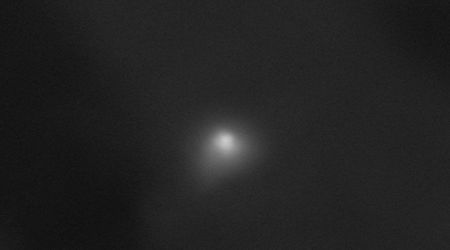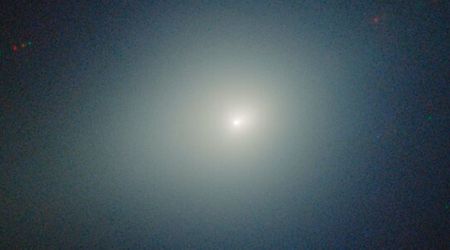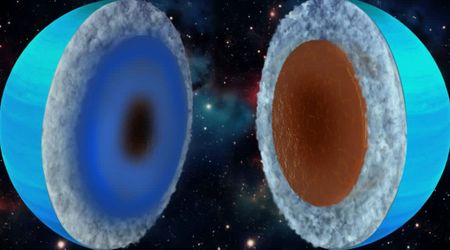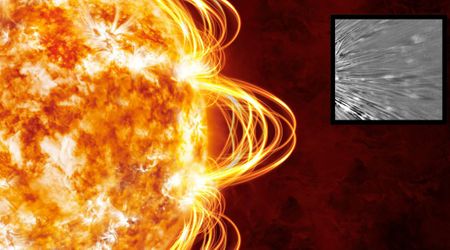Post SpaceX's Falcon 9 launch, a glowing spiral stunned skywatchers — here's what caused it

Europe was treated to an unexpected celestial display on the night of June 23, as the upper stage of a SpaceX Falcon 9 rocket created a strange, visible plume of expelled propellant, captivating stargazers across the continent, as per Space.com.
The dazzling spectacle originated from SpaceX's Transporter-14 mission, which had launched earlier that day at 2:25 p.m. PT from Space Launch Complex 4E (SLC-4E) at Vandenberg Space Force Base in California. This dedicated Smallsat Rideshare Mission successfully deployed 70 commercial payloads into low-Earth orbit, ranging from cubesats and microsats to re-entry capsules. A notable detail of the launch was the first stage booster, which completed its impressive 26th flight, underscoring SpaceX's advancements in rocket reusability, as mentioned on SpaceX.
Watch Falcon 9 launch the Transporter-14 mission to orbit https://t.co/pl4oAZQaEI
— SpaceX (@SpaceX) June 23, 2025
After its primary task of deploying satellites, the Falcon 9's upper stage performed a routine fuel purge, releasing its remaining rocket propellant before beginning its re-entry into Earth's atmosphere. This expelled fuel rapidly froze in the cold upper atmosphere, and, reflecting the Sun's light, became a diffuse, glowing cloud visible to the naked eye.

The ethereal phenomenon did not go unnoticed. The Virtual Telescope Project's all-sky camera in Manciano, Italy, successfully captured the diffuse cloud of particles at 8:13 p.m. EDT on June 23 (0013 GMT June 24), with the soft glow of the Milky Way serving as a cosmic backdrop. Similarly, Oxfordshire-based astrophotographer and science communicator Mary McIntyre documented the plume's rapid transit over the United Kingdom, utilizing specialized meteor and aurora-hunting cameras for time-lapse videos, as reported on Space.com.
Huge thanks to @melgigg for telling me the #SpaceX #Transporter14 #rocket had passed over last night, leaving a pretty awesome #RocketPlume. We got it on our #MeteorCameras, auroracam & all sky cam. Looks awesome on the videos!#RocketPlume #RocketLaunch pic.twitter.com/rprGXeig7S
— Mary McIntyre @marymcintyreastro.bsky.social (@Spicey_Spiney) June 24, 2025
Stargazing enthusiast, Jure Atanackov, also reported on X an "unusual sight in the skies over Europe this morning," describing a "brief (<10 min) bright elongated luminous cloud" that appeared between 00:10 and 00:20 UTC. He noted its likely origin as a "rocket plume (propellant dump?)" and that it was spotted by webcams over the Alps, disappearing by 00:30 UTC.
Unusual sight in the skies over Europe this morning. A brief (<10 min) bright elongated luminous cloud appeared between 00:10 and 00:20 UTC. Likely a rocket plume (propellant dump?), it was spotted by webcams over the Alps and @frapepppemaria who also reported it. It disappeared… pic.twitter.com/fbV9uWjKAM
— Jure Atanackov (@JAtanackov) June 24, 2025
While the appearance of such plumes is not entirely unprecedented, having been observed after previous Falcon 9 rideshare missions where fuel purges are commanded, this particular event lacked the defined swirling structures sometimes seen in rocket exhaust. The sighting also brings renewed attention to the potential connection between rocket propellant and the formation of high-altitude noctilucent clouds. These "night shining" clouds are more commonly at higher latitudes, but in recent decades, their appearance closer to the equator has prompted scientists to consider whether rocket exhaust plays a role in their formation.

These rare atmospheric phenomena, noctilucant clouds, are collections of ice crystals that become visible in the twilight hours of late summer evenings, just as the brightest stars appear or even after dark, because they are still high enough in altitude to reflect sunlight. Noctilucent clouds occupy the Mesosphere — the highest layer of Earth's atmosphere where clouds can form. They are typically observed at latitudes between 45°N and 80°N in the Northern Hemisphere, with fewer sightings in the Southern Hemisphere due to limited landmass at equivalent latitudes. The formation of noctilucent clouds requires water vapor, dust, and extremely low temperatures. Scientists believe dust may come from tiny meteors, while moisture might originate from the tropopause or chemical reactions like those involving methane, according to the MET Office.









